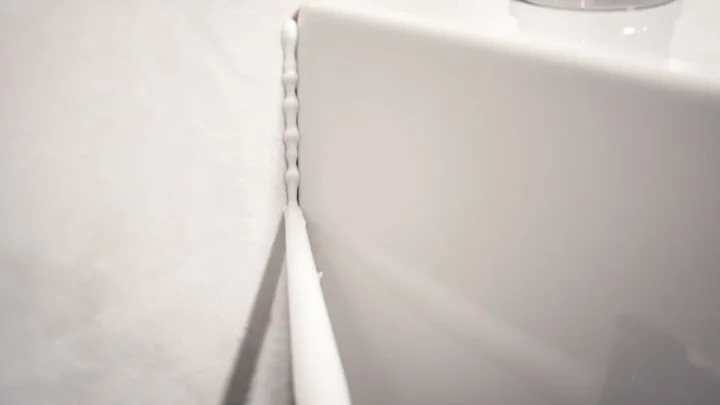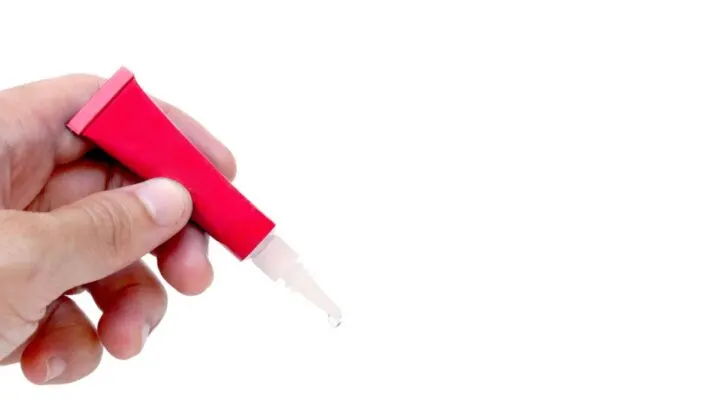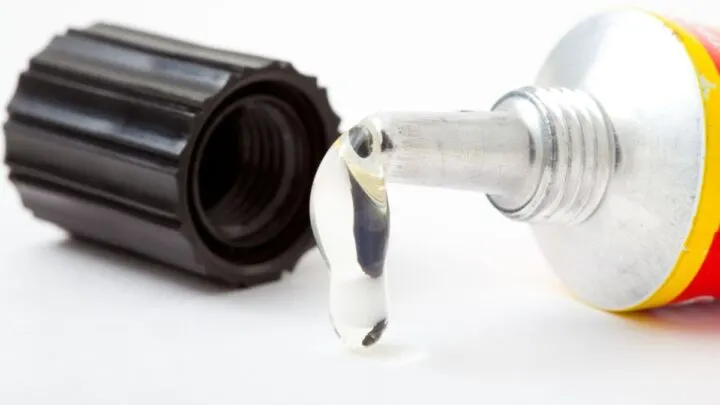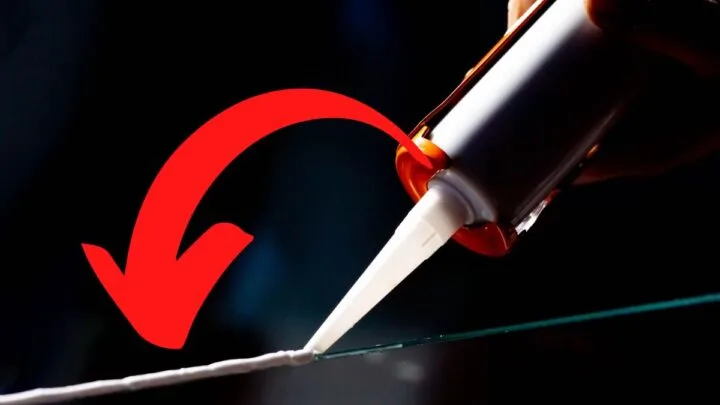Working with construction adhesives is so much easier than trying to hammer in a nail at the right angle.
Just one slip of the wrist and there will be an unsightly dent in the wood for the rest of its existence.
Liquid Nails adhesives are strong and can hold together wood. But it is also great at holding stronger and heavier material together.
As long as Liquid Nails is given the right time to dry and cure, it can be a powerful construction adhesive that can take on the toughest projects.
You can use Liquid Nails on a variety of materials and surfaces. From concrete to plastic, metal, fabric, and stucco, this construction adhesive can bind to nearly any surface. The only material it cannot bind to are plastics made with polypropylene (PP) or polyethylene (PE).
After applying Liquid Nails to a surface or a material, it will need time to dry and cure.
But when the curing process finishes, the adhesive will last for years.
How Does Liquid Nails work?
There are many construction adhesives available in hardware stores, but Liquid Nails is one of the most highly rated adhesives in the construction industry.
The Liquid Nails website proudly sings the praises of their star adhesive.
The webpage states that Liquid Nails can bind to fabric, concrete, plastic, wood, iron, steel, stucco, drywall, foam, glass, rubber, and other objects.
But it is not enough to squirt Liquid Nail in a thick line on a piece of concrete and press it between another gray concrete piece.
Liquid Nails dries and cures at different speeds, depending on the material. And there are some materials that Liquid Nails will not work on at all.
Knowing how Liquid Nails interacts with a variety of materials will make it easier to use this adhesive effectively.
How does Liquid Nails work best with each material?

Does Liquid Nails Work on Concrete?
Concrete is one of the many materials that Liquid Nails can bind to. Liquid Nails is good to use on concrete, especially for repair jobs.
What should you expect when you use Liquid Nails on concrete?
First, Liquid Nails dries and cures incredibly fast when it is applied to concrete.
Despite its solid structure, concrete is very porous and allows air to flow through it. The air carries away moisture so that this adhesive dries quickly.
Liquid Nails can also seal cracks forming within the concrete.
It is best to remove any paint, primer, or stain on the concrete before applying Liquid Nails.
When gluing two pieces of concrete together, you can use either the original Liquid Nails product or using the specialized Liquid Nails for concrete and mortar.
The latter product is a bit more weatherproof and can resist moisture and sunlight damage better than the original product.
The Liquid Nails for concrete and mortar product is a gray color so the color of the group will not stand out when it is applied to concrete.
Does Liquid Nails Work on Plastic?
Nearly all types of plastic work with Liquid Nails.
One tip to know about using Liquid Nails on plastic is to expect a long dry and cure time. Plastic is not a breathable material.
It does not allow air to flow through it. In fact, plastic is far less porous than concrete.
When you apply Liquid Nails in a zigzag pattern to plastics and press them together, you may have to wait the full 24 hours for the adhesive to dry.
Then, you have to wait the full 7 days for it to finally cure.
If you can, be sure to spread the Liquid Nails adhesive in a very thin line. If the glue line is thinner, it will take less time to dry.
Another tip to know is that there are certain types of plastic that Liquid Nails is not able to bind to and those are plastics made with polypropylene and polyethylene.
Using the original Liquid Nails product can work well on any type of plastic. However, there is a Liquid Nails Polyurethane Construction Adhesive.
This product specializes in bonding glass, ceramic, and plastic. It is also designed to be weatherproof and more durable, especially in hot and freezing temperatures.
What About Polypropylene (PP) or Polyethylene (PE)?
As mentioned above, Liquid Nails cannot work on any plastic material made from polypropylene or polyethylene. Liquid Nails will also not work on plastic that have both polypropylene and polyethylene.
The reason why Liquid Nails cannot work on plastics that have these two chemicals is due to something called low surface energy.
Glues and adhesives, like Liquid Nails, come out wet first and then dries and cures.
But these two chemicals will prevent Liquid Nails from drying on plastic surfaces and they do so by preventing the wet glue from bonding to the plastic.
Polypropylene and polyethylene-based plastics are not used in most Industries. The most common products where these two types of chemicals are used are medical products and tools, automotive products, and heavy-duty fabrics like gym bags, backpacks, and tents.
So, you don’t have to search through all of your plastic material for these two chemical names before you squeeze the glue on their surfaces.
Does Liquid Nails Work on Metal?
In situations where metal cannot be welded and there is no way to use nail guns, many DIY home project enthusiasts will happily reach for Heavy Duty Liquid Nails construction glue.
Liquid Nails works on most metals, like iron, steel, copper, and brass. However, before this adhesive is applied to a metal, it must be treated with anti-rust chemicals.
Although Liquid Nails does work on metal, it should not be used in every project that has metal material.
Heavy duty projects, like the types of projects that contractors are hired to do, are not the type of projects that Liquid Nails was designed for.
Like plastic, metal is not porous and does not allow air to flow through its structure. So, expect to wait a full 24 hours for the liquid nail to dry.
Then, you most likely have to wait the full 7 days for the adhesive to properly cure. However, if the metal is outside in the warm air, the glue will dry and cure faster.
Binding Wood to Metal
If a project requires binding wood to metal, Liquid Nails will be able to do them together.
However, that cannot be any paint on the wood. Also, the word must be sanded down so that its surface is even.
The metal must be treated with an anti-rust agent. Once the wood and the middle are ready, add a small bit of water to the surface of the wood.
Place the water in the area where you plan to apply the glue. A small amount of water will help the liquid nail bind into the wood.

Does Liquid Nails Work on Marble?
The original Liquid Nails product may not be the best adhesive to use when gluing marble.
Liquid Nails has another adhesive called Marble and Granite adhesive. This product is low moisture, so you will not have to wait a long time for it to dry and cure.
When applying the Liquid Nails adhesive to marble, it is best to apply a generous amount.
Do not spread a thin line sparingly over the area you want to glue. Marble is heavy and if there is not enough glue, it can come apart.
Does Liquid Nails Work on Vinyl Flooring?
Yes, Liquid Nails Is commonly used to repair loose vinyl flooring squares.
However, many contractors end vinyl flooring experts would not recommend using Liquid Nails to install a brand-new vinyl floor.
The right type of adhesive to use on vinyl flooring is acrylic based glue.
Liquid Nails is not an acrylic-based glue, so it cannot work long-term on vinyl flooring.
According to howstuffworks.com, Liquid Nails will dry up and crack underneath vinyl flooring in just a few years.
The original Liquid Nails product is an acceptable adhesive to repair loose vinyl flooring tiles.
But if the vinyl tiles are in the bathroom, then use a different Liquid Nails product, one that is better suited for the environment.
Liquid Nails Surround and Shower Grade Adhesive can withstand constant exposure to moisture. It will also dry and cure faster in the humid room.
It will not dry up and crack as quickly as the original product, so your repair job will last longer.
But, like the original product, Liquid Nails Surround and Shower Adhesive is not a permanent adhesive to install a brand-new vinyl shower floor.
Does Liquid Nails Work on Shoes?
If you’re in a bit of a bind, and you don’t have any shoe glue, then use the nearest tube of Liquid Nails!
After using Liquid Nails on your shoe, you may find that you don’t want to use anything else.
Using Liquid Nails to repair a pair of shoes is a viable method.
Many DIY enthusiasts have found that using Liquid Nails or adhesives to repair some of their tougher fabric clothing items, like shoes, sandals, backpacks, work better than regular shoe or fabric glue.
When using Liquid Nails on your shoes, watch how thick the glue comes out of the application tube. Apply the glue in a zigzag pattern and keep the glue thread as thin as possible.
If the glue line is too thick, the shoe will not be as flexible after the glue dries and cures.

Do Liquid Nails Work on Mirrors?
If you notice that the mirror in your bathroom is wobbling, grab your Liquid Nails product and apply some to the corners as soon as you can.
Liquid Nails is a great product to use on mirrors, as it will keep even the heaviest mirrors in place for years.
For example, there were several mirrors around my home that were not mounted on the wall with nails. They were held up on the wall with Liquid Nails glue and they didn’t come down for 10 years.
When we decided to remove the mirrors, during a home renovation, we had to pry them off with a crowbar!
I live in California and none of the mirrors ever fell off the drywall, even in the worst earthquake. Now that’s secure!
Conclusion to Liquid Nails
Liquid Nails adhesives are designed to work on many different types of materials including metal, wood, rubber, laminate, vinyl, tile, foam, glass, and fabric.
But when applying Liquid Nails to each of these materials, they should not be treated the same way.
Some materials, like wood and concrete, allow air to flow through their structure, which allows the adhesive to dry and cure faster.
Other materials, like plastic and steel, do not allow any air to flow through and it will take much longer for the adhesive to dry and cure.
Liquid Nails works on most plastic products except those made with polypropylene and polyethylene.
Vinyl material requires acrylic based glue, so Liquid Nails should only be used for repair work.


